#eco friendly travel
Explore tagged Tumblr posts
Text
Listen if the incentive were a private rail car I would certainly reform society with my bare hands brick by brick, I'll install the cross country rail my damn self, with convenient stops along the way and everything, I just want to take a train from the depot in NJ and get wherever I want, whenever people envision a trans-continental they always start in fucking NY like the rest of the east coast is fake, with a central through line and proper rail connections you could connect existing track to a new high speed rail or even a slow speed rail for luxury. It's so crazy to me that as a nation, we abandoned working infrastructure cause we were now the masters of the sky tm.
Look all I'm saying is I want to live in a small queer village and then take the brand new marvel of engineering the steam engine to the capital with my lovely wife for a day of fun and then for less than cab fare be able to go home and get a nap in on the way, is that too much to ask?
We need to bring back private rail cars as the cool, sexy, exclusive way to travel, so instead of dumping the carbon budget of a small nation in the global south on private jets, celebrities have to attach their luxury pull an cars to the back of an Amtrak. Then the celebrities will lobby for Amtrak lines to be better
Seriously when did this
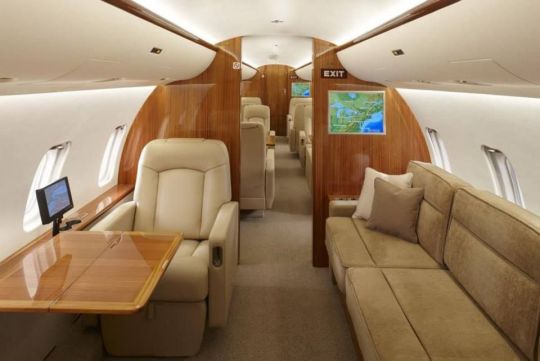
Become sexier than this


Like isn't it nice to watch the scenery, to be able to open a window and have fresh air, to be able to stand up all the way, not have your ears pop?
101K notes
·
View notes
Text
The 8 Most Eco-Friendly Cities in the USA You Need to Visit Now in 2024

The United States is home to an increasing number of eco-friendly cities that are leading the charge in sustainability and conservation of the environment. From coast to coast, these greenest cities will set the standard for green living, renewable energy, and planning that is urban innovative. This article will explore the 8 most eco-friendly cities in the US, highlighting their initiatives that are unique, green achievements, and commitment to a sustainable future.
Introduction to Eco-Friendly Cities
In the ongoing quest for a sustainable future, eco-friendly cities have emerged as beacons of hope, showcasing solutions that are innovative to combat climate change, reduce emissions of carbon, and promote quality of life for their residents that be better. These urban areas prioritize the protection of the environment, renewable energy, and the well-being of their communities, by setting a standard for living that is green and development that is urban.
The Importance of Sustainable Urban Living
As the world’s population continues to urbanize, the role of eco-friendly cities becomes increasingly crucial. These cities are at the forefront of addressing the environmental challenges posed by rapid urbanization, such as air pollution, resource depletion, and the growing impact on the planet’s climate. By embracing sustainable urban planning, eco-friendly cities are paving the way for a more livable and resilient future, where economic growth and environmental conservation can coexist harmoniously.
Criteria for Evaluating Eco-Friendly Cities
When assessing the eco-friendly credentials of a city, several key factors are considered, including its commitment to renewable energy sources, the implementation of clean air initiatives, the development of green spaces, and the overall reduction of the city’s carbon footprint. These criteria help to identify the cities that are truly leading the charge in sustainable urban living, serving as role models for others to emulate.CriteriaDescriptionRenewable EnergyThe city’s use of clean, renewable energy sources, such as solar, wind, or geothermal power, to reduce its reliance on fossil fuels.Clean Air InitiativesMeasures taken by the city to improve air quality, including the promotion of public transportation, the implementation of low-emission zones, and the reduction of industrial emissions.Green Spaces DevelopmentThe creation and preservation of parks, urban forests, and other green areas that enhance the city’s livability, promote biodiversity, and mitigate the urban heat island effect.Carbon Footprint ReductionThe city’s overall efforts to reduce its greenhouse gas emissions and its impact on the global climate, such as through energy-efficient building codes, waste management programs, and the promotion of sustainable transportation options.
San Francisco: A Leader in Green Initiatives

As one of the most eco-friendly cities in the United States, San Francisco has a long-standing commitment to renewable energy and sustainable initiatives. The city’s ambitious goal of achieving 100% renewable electricity by 2030 is a testament to its dedication to reducing carbon footprint and promoting clean air initiatives.
Renewable Energy Efforts
San Francisco’s renewable energy efforts are spearheaded by the CleanPowerSF program, which provides residents with access to clean, affordable energy. This initiative, coupled with the city’s investment in solar power and other renewable energy sources, has positioned San Francisco as a leader in the greenest cities movement.
Public Transportation and Walkability
Recognizing the importance of sustainable urban planning, San Francisco has also made significant strides in promoting public transportation and walkability. The city’s extensive network of buses, trains, and bike-sharing programs encourages residents to reduce their reliance on personal vehicles, contributing to improved air quality and a lower carbon footprint. Additionally, San Francisco’s pedestrian-friendly infrastructure and green space development make it an inviting city for residents and visitors alike.
Portland: A Model of Sustainable Urban Planning

Portland, Oregon, is widely regarded as a pioneering city in sustainable urban planning. The city’s commitment to environmentalism and livability is evident in its comprehensive approach to development and transportation. From its extensive green space development to its innovative clean air initiatives, Portland has set the standard for other cities aspiring to reduce their carbon footprint and promote a more eco-friendly and green future.
One of the defining features of Portland’s sustainable urban planning is its dedication to public transportation and pedestrian-friendly infrastructure. The city’s extensive light rail and bus systems make it easy for residents to navigate the city without relying on personal vehicles, while the extensive network of bike lanes and walking paths encourages active, emission-free modes of transportation. This commitment to sustainable mobility has not only reduced the city’s carbon footprint but has also enhanced the overall quality of life for Portland’s residents.
In addition to its transportation initiatives, Portland has also made significant strides in green space development and urban forestry. The city is home to numerous parks, gardens, and natural areas that provide residents with ample opportunities for outdoor recreation and relaxation, while also serving as important carbon sinks and habitats for local wildlife. This holistic approach to urban planning has earned Portland a reputation as one of the greenest cities in the United States, setting an example for other municipalities to follow.Key Sustainable Initiatives in PortlandImpactComprehensive public transportation systemReduced reliance on personal vehicles, lower carbon footprintExtensive network of bike lanes and walking pathsPromotion of active, emission-free transportationAbundant green spaces, parks, and urban forestryCarbon sequestration, habitat preservation, and improved air qualityStrict building codes for energy efficiency and green constructionReduced energy consumption and environmental impact of buildingsInnovative waste management and recycling programsDiversion of waste from landfills, promotion of circular economy
Seattle: Embracing Clean Energy and Green Spaces

As a leading eco-friendly city, Seattle, Washington, has made significant strides in environmental conservation and sustainability. The city’s commitment to renewable energy is exemplified by its ambitious goal of achieving 100% renewable electricity by 2030, a target supported by initiatives like the Seattle City Light’s Green Up program.
Renewable Energy Sources
Seattle’s eco-friendly approach extends to its energy infrastructure, with the city actively investing in renewable energy sources to reduce its carbon footprint. The city’s municipal utility, Seattle City Light, has been a pioneer in the adoption of clean energy, sourcing a substantial portion of its power from hydroelectric, wind, and solar generation. Through innovative programs like Green Up, residents and businesses can choose to power their homes and operations with 100% renewable electricity, further contributing to the city’s sustainable energy ecosystem.
Urban Forestry and Parks
In addition to its renewable energy initiatives, Seattle has also made significant investments in its green spaces and urban forestry. The city boasts an extensive network of parks, from the iconic Discovery Park to the lush Seward Park, providing residents with ample opportunities for outdoor recreation and connection with nature. Seattle’s commitment to urban forestry is evident in its efforts to maintain and expand its tree canopy, which not only enhances the city’s aesthetic appeal but also helps to improve air quality, reduce urban heat island effects, and sequester carbon dioxide.
By embracing clean energy solutions and prioritizing the preservation and expansion of its green spaces, Seattle has established itself as a shining example of an eco-friendly city that is dedicated to creating a more sustainable urban environment for its residents and visitors alike.
Boston: Historic City, Modern Sustainability

Boston, Massachusetts, is a city that seamlessly blends its historic charm with a modern commitment to sustainability. The city has been recognized for its green building initiatives, with a significant number of LEED-certified structures and a focus on energy efficiency in both new construction and building retrofits.
Green Building Initiatives
Boston’s dedication to sustainable urban planning is evident in its comprehensive green building program. The city has implemented stringent building codes that prioritize energy efficiency, renewable energy integration, and the use of eco-friendly materials. This has resulted in a skyline dotted with LEED-certified buildings, showcasing Boston’s leadership in sustainable urban development.
Recycling and Waste Reduction Programs
In addition to its green building initiatives, Boston has also made significant strides in recycling and waste reduction. The city has implemented comprehensive programs to divert waste from landfills, promote composting, and encourage residents and businesses to adopt more sustainable waste management practices. These efforts have contributed to a reduction in the city’s carbon footprint and the preservation of its green spaces.Eco-Friendly InitiativeDescriptionImpactLEED-Certified BuildingsBoston has a significant number of buildings that have achieved LEED certification, demonstrating the city’s commitment to sustainable construction and energy efficiency.Reduced energy consumption, lower greenhouse gas emissions, and a more environmentally responsible built environment.Recycling and Composting ProgramsThe city has implemented comprehensive recycling and composting initiatives to divert waste from landfills and promote sustainable waste management.Decreased waste sent to landfills, increased resource recovery, and a smaller carbon footprint for the city.Green Building CodesBoston has adopted strict building codes that prioritize energy efficiency, renewable energy integration, and the use of eco-friendly materials.Improved energy performance of new and retrofitted buildings, contributing to the city’s overall sustainability goals.
eco-friendly cities, greenest cities
Eco-friendly cities often prioritize initiatives that improve air quality and promote the use of green transportation options. These measures are crucial in reducing a city’s environmental impact and creating a healthier, more sustainable urban environment.
Air Quality Measures
Many of the greenest cities in the US have implemented comprehensive strategies to address air pollution and improve overall air quality. This includes clean air initiatives like increasing the use of renewable energy sources, restricting emissions from vehicles and industries, and investing in green space development to absorb carbon dioxide and release fresh oxygen.
Green Transportation Options
Encouraging the adoption of sustainable urban planning and green transportation is a hallmark of eco-friendly cities. These cities promote the use of public transit, bike-sharing programs, electric vehicles, and pedestrian-friendly infrastructure to reduce carbon footprint and encourage a more active, environmentally-conscious lifestyle among residents.CityAir Quality InitiativesGreen Transportation OptionsSan FranciscoRenewable energy, electric vehicle incentives, urban forestryExtensive public transit, bike-sharing, pedestrian-friendly streetsPortlandStrict emissions regulations, green building codes, urban tree canopyLight rail system, bike lanes, car-free zonesSeattle100% renewable electricity, green stormwater infrastructure, urban forestsElectric bus fleet, bike-sharing, pedestrian-focused development
Denver: Balancing Urban Growth and Environmental Conservation

As the population of Denver, Colorado, has expanded over the years, the city has implemented comprehensive strategies to mitigate the environmental impact of development. By striking a careful balance between urban growth and environmental conservation, Denver has emerged as a prime example of an eco-friendly city that prioritizes sustainability and the well-being of its residents.
Water Conservation Efforts
Denver’s commitment to sustainable urban planning is particularly evident in its water conservation initiatives. The city has implemented innovative programs to reduce water usage, such as the “Water-Wise Landscaping” program, which encourages residents to use drought-tolerant plants and efficient irrigation systems. Additionally, the city has invested in infrastructure upgrades to prevent water leaks and improve water efficiency throughout the municipal system.
Outdoor Recreation and Open Spaces
Recognizing the importance of green space development for a healthy and livable city, Denver has prioritized the creation and preservation of outdoor recreation areas and open spaces. The city boasts an extensive network of parks, trails, and natural areas, including the iconic Rocky Mountain Arsenal National Wildlife Refuge, which provides residents with ample opportunities for outdoor activities and connections with nature. These green spaces not only enhance the city’s eco-friendly image but also contribute to improved air quality and reduced carbon footprint.
Minneapolis: A Midwestern Hub of Sustainability

As a city nestled in the heart of the Midwest, Minneapolis, Minnesota, has emerged as a shining example of eco-friendly urban living. This vibrant city has taken bold strides to promote sustainable transportation and foster a thriving local food ecosystem, solidifying its reputation as a Midwestern hub of sustainability.
Bike-Friendly Infrastructure
Minneapolis has long been recognized as one of the most bike-friendly cities in the United States, with an extensive network of dedicated bike lanes, trails, and shared-use paths. The city’s commitment to eco-friendly cities and green space development is evident in its investment in bicycle infrastructure, making it easier and safer for residents to opt for this sustainable urban planning alternative to driving. Minneapolis’ bike-share program, Nice Ride Minnesota, further encourages the use of this clean, carbon footprint reduction mode of transportation.
Sustainable Food Systems
Minneapolis is also at the forefront of the sustainable food systems movement, with a thriving local food economy and a strong emphasis on clean air initiatives and green space development. The city boasts a vibrant network of community gardens, urban farms, and farmers’ markets, providing residents with access to fresh, locally sourced produce. Furthermore, Minneapolis has implemented policies and programs that support the growth of sustainable agriculture and the reduction of food waste, contributing to its status as the greenest city in the Midwest.Eco-Friendly InitiativeKey AchievementsBike-Friendly InfrastructureThriving local food economy with community gardens and urban farmsRobust network of farmers’ markets and support for sustainable agriculture and programs aimed at reducing food wasteSustainable Food SystemsThriving local food economy with community gardens and urban farmsRobust network of farmers’ markets and support for sustainable agriculture and programs aimed at reducing food waste
Honolulu: Paradise with a Sustainable Mindset

Honolulu, the capital city of Hawaii, is a tropical paradise that has embraced a sustainable mindset. As an eco-friendly city and one of the greenest cities in the United States, Honolulu is particularly attuned to the importance of environmental conservation and the need to reduce its carbon footprint.
Clean Energy Initiatives
Honolulu has made significant strides in transitioning to clean energy sources, with a goal of achieving 100% renewable electricity by 2045. The city’s sustainable urban planning efforts include the expansion of solar energy infrastructure, the adoption of electric vehicles in the municipal fleet, and the implementation of clean air initiatives to improve air quality.
Coastal Conservation Programs
As an island community, Honolulu recognizes the importance of protecting its green spaces and coastal ecosystems. The city has implemented comprehensive coastal conservation programs to preserve its beautiful beaches, coral reefs, and marine life. These initiatives focus on reducing plastic waste, promoting sustainable tourism, and educating the community on the importance of environmental protection.
Honolulu’s commitment to sustainability and environmental stewardship serves as a shining example for other eco-friendly cities to follow. By prioritizing clean energy, sustainable urban planning, and coastal conservation, Honolulu is ensuring that its tropical paradise remains a model of green development for generations to come.
Austin: Keeping It Weird and Green

Austin, Texas, is a city that prides itself on its unique, vibrant culture and its unwavering commitment to sustainability. Known for its “Keep Austin Weird” slogan, the city has embraced eco-friendly practices that reflect its progressive and innovative spirit.
Urban Farming and Local Food
Across the eco-friendly cities of the United States, the farm-to-table movement has gained significant momentum, and Austin is at the forefront of this trend. The city boasts a thriving urban farming community, with numerous community gardens and urban farms that provide residents with access to fresh, locally sourced produce. This commitment to sustainable food systems not only reduces the carbon footprint reduction but also fosters a sense of community and supports the local economy.
Green Building Codes
As the greenest cities continue to push the envelope in sustainable urban planning, Austin has implemented comprehensive green building codes that prioritize energy efficiency, water conservation, and the use of eco-friendly materials. These building standards, which apply to both new construction and retrofits, have helped transform the city’s skyline, with an increasing number of LEED-certified structures that showcase the city’s dedication to sustainable urban planning.
Austin’s unwavering commitment to sustainability is a testament to the city’s innovative spirit and its desire to create a more eco-friendly and livable urban environment. By embracing urban farming, supporting local food systems, and implementing stringent green building codes, Austin is leading the way in the quest for a more sustainable future.
Conclusion
The eco-friendly cities featured in this article have set a new benchmark for sustainable urban living in the United States. From the renewable energy efforts of San Francisco to the innovative urban planning of Portland, these cities have demonstrated that it is possible to balance economic growth, environmental conservation, and the well-being of their residents.
Through initiatives that prioritize clean air, green spaces, and carbon footprint reduction, these eco-friendly cities are leading the charge in the fight against climate change. Their commitment to sustainable urban planning, clean transportation, and renewable energy sources serves as a model for other cities across the country to follow.
As the demand for greener cities continues to grow, the examples set by these urban centers of sustainability will inspire more communities to embrace sustainable urban planning, clean air initiatives, and the development of green spaces. By working together, we can create a future where eco-friendly cities are the norm, not the exception, and where the carbon footprint of our urban landscapes is significantly reduced.
FAQ
What makes a city eco-friendly?
Eco-friendly cities prioritize sustainability, environmental protection, and the well-being of their residents. These cities implement initiatives to combat climate change, reduce carbon emissions, and promote a better quality of life through sustainable urban planning, clean air measures, green space development, and renewable energy efforts.
How do eco-friendly cities evaluate their environmental impact?
Eco-friendly cities typically evaluate their environmental impact based on criteria such as renewable energy usage, green building practices, public transportation and walkability, air quality, water conservation, waste management, and the provision of green spaces and outdoor recreation opportunities.
What are some of the top eco-friendly cities in the US?
Some of the most eco-friendly cities in the US include San Francisco, Portland, Seattle, Boston, Denver, Minneapolis, Honolulu, and Austin. These cities have implemented a wide range of sustainable initiatives and are recognized for their commitment to environmental conservation and green living.
How do eco-friendly cities promote renewable energy?
Eco-friendly cities often set ambitious goals for renewable energy, such as achieving 100% renewable electricity by a specific year. They support this through initiatives like clean energy programs, investment in solar and wind power, and the development of green infrastructure.
What are some of the air quality measures in eco-friendly cities?
Eco-friendly cities prioritize initiatives to improve air quality, such as promoting the use of electric vehicles, investing in public transportation, and implementing policies to reduce emissions from industrial and commercial activities. These measures help to create a healthier urban environment for residents.
How do eco-friendly cities integrate green spaces and outdoor recreation?
Eco-friendly cities recognize the importance of green spaces and outdoor recreation for the well-being of their residents. They invest in the development of urban parks, greenways, and other natural areas, as well as promote outdoor activities and sustainable land use practices.
What role do sustainable transportation options play in eco-friendly cities?
Eco-friendly cities prioritize sustainable transportation options, such as public transit, bike-sharing programs, and pedestrian-friendly infrastructure. These initiatives help to reduce the city’s carbon footprint, improve air quality, and enhance the overall livability of the urban environment.
1 note
·
View note
Text
Eco-Friendly Travel Destinations 2023: Top Picks
Eco-Friendly Travel Destinations Eco-Friendly Travel Destinations-Discover sustainable travel spots that leave a positive impact on nature. With Earth Day 2023 upon us, it’s more important than ever to consider environmentally responsible travel options. Whether you’re a nature enthusiast or simply looking to reduce your carbon footprint, these destinations are sure to inspire and delight…

View On WordPress
#caribbean eco-friendly destination#destinations#eco friendly travel#eco travel#eco-friendly#eco-friendly travel#eco-friendly travel tips#green destinations#green travel#must see travel destinations#sustainable travel#sustainable travel tips#top eco-friendly tourist destinations in the world#top travel destinations#travel#travel destination#travel destinations#travel destinations 2019#travel tips
0 notes
Link
0 notes
Text







Four Seasons Peninsula Papagayo, Costa Rica,
Zürcher Arquitectos,
Interiors by Paul Duesing Partners,
#art#design#architecture#travels#boutique hotel#interior design#luxury lifestyle#luxury hotel#interiors#luxury hotels#four season#costa rica#zurcher arquitectos#paul duesing partners#eco-friendly#villa#papaguo#tropical#beach#beautiful destinations
103 notes
·
View notes
Text
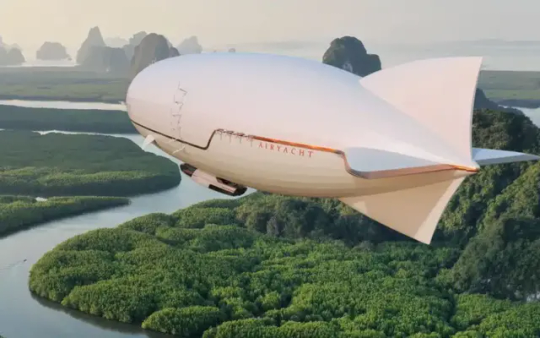
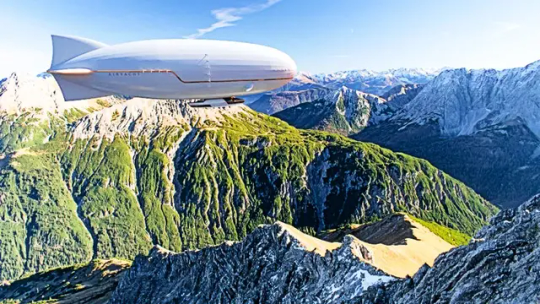
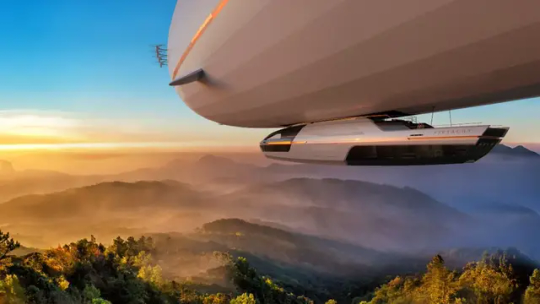

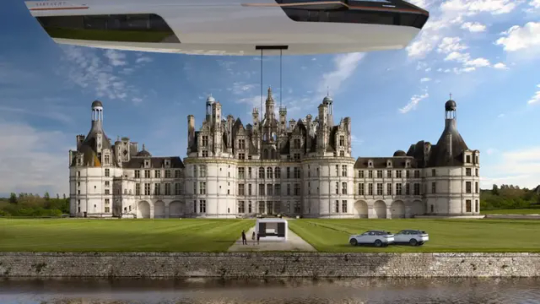
AirYacht will now stay exclusively in the air, says CEO Guillaume Hoddé, who cofounded the Swiss company with fellow engineer Matthieu Ozanne. Jettisoning
#art#design#flying private#travels#luxury lifestyle#flying palace#airplane#airyacht#baloon#jetsetter#jetset#billionaire#billionairelife#jettisoning#airship#vehicle#blimp#dirigible#eco friendly
49 notes
·
View notes
Text
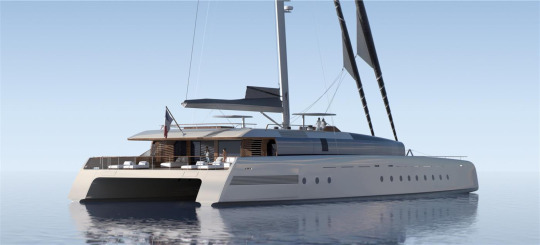

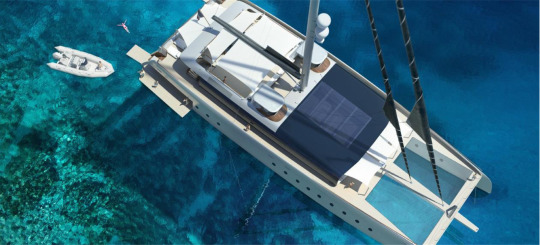
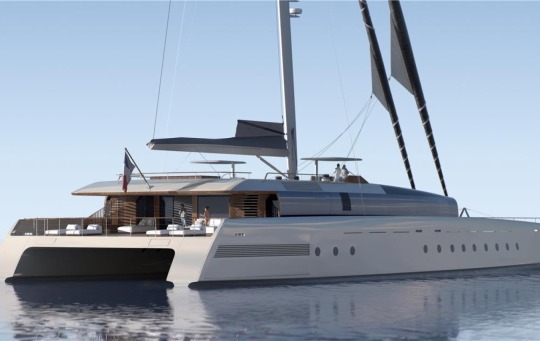



Perini Navi's 'Art Explorer,'
Commissioned by Art Explora, it's the world's largest sailing catamaran, with a length of 46.5 meters, a width of 17.30 meters, and a 50-meter mast.
The flybridge will host virtual exhibitions, while the central part will house the gallery for the inaugural digital exhibition 'Icons' on women in the Mediterranean.
On the roof of the deckhouse, have been installed 65 square meters of solar panels, allowing an instantaneous production of 12 kW and a total energy accumulation of more than 200 kW each day.
The design is by Axel de Beaufort and Guillaume Verdier.
#art#design#superyacht#megayacht#ocean#luxury yacht#sea#boat#ship#travels#perini navi#arexplorer#catamaran#sailing#sailing yacht#solar powered#solar power#eco friendly#alex de beaufort#guillaume verdier#concept#yachtconcept#gallery#art gallery
68 notes
·
View notes
Text

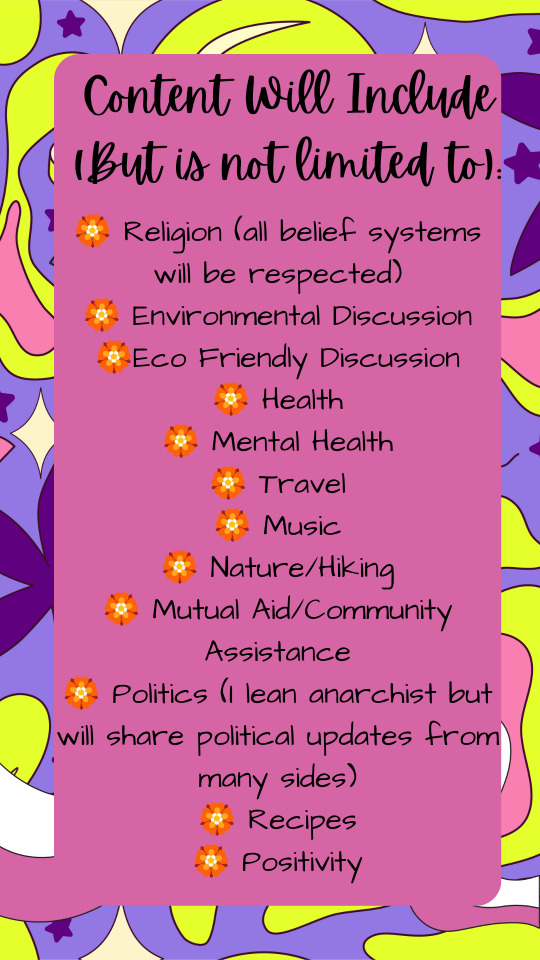

Sex Work/NSFW: @jaspervoorheespart2
Fitness/Health: @finalgirlfitness
Values
Do good recklessly
Help people when you can
Community is vital
No one is wrong for their religious beliefs, or lack of, unless they are using it to harm others)
Everyone deserves respect until they give you a reason not to give it
Pro LGBTQIA+
Pro Choice
Survival skills are important
Nature is good for your health
Content will include (but is not limited to)
Religion (all belief systems will be respected)
Environmental Discussion
Eco Friendly Discussion
Health
Mental Health
Travel
Music
Nature/Hiking
Mutual Aid/Community Assistance
Politics (I lean anarchist but will share political updates from many sides)
Recipes
Positivity
Do Not Interact If:
TERF/SWERF
Radfem/Tradfem
Homophobic
Transphobic
Fatphobic
Racist
Sexist
Ableist
Radical Christian
Anti sex work
Exclusively post feeder/feeder
ED/Thinspo blog
Partner: @primal-sanguine
#lost onpurpose#religion#environmentalism#eco friendly#health#mental health#travel#music#nature#hiking#mutual aid#community assistance#politics#recipes#positivity#pro choice#pro lgbtqia+#survival skills#support sex workers#respect all religions
28 notes
·
View notes
Text

Explore the benefits of ecotourism and how it promotes sustainable travel. Discover how ecotourism supports conservation and local communities.
Do Visit: https://bharatvarshnaturefarms.com/the-benefits-of-ecotourism-sustainable/
#Ecotourism benefits#Sustainable travel practices#Environmental conservation tourism#Economic impact of ecotourism#Cultural preservation through tourism#Eco-friendly travel destinations#Responsible tourism initiatives#Community-based ecotourism#Sustainable tourism development#Educational ecotourism experiences
2 notes
·
View notes
Text
Top Eco-Friendly Destinations to Add to Your Bucket List
Traveling sustainably doesn’t mean compromising on breathtaking experiences. Around the world, stunning destinations are leading the charge in eco-tourism, offering travelers opportunities to explore responsibly while supporting conservation and local communities. Whether you’re a nature enthusiast, a cultural explorer, or simply looking for guilt-free luxury, these eco-friendly spots deserve a spot on your bucket list.

1. Costa Rica: A Pioneer in Eco-Tourism
Costa Rica has long been a leader in sustainable tourism, protecting over 25% of its land as national parks and reserves. Known for its lush rainforests, pristine beaches, and diverse wildlife, it’s the perfect place for adventure and relaxation. Visit eco-lodges, join guided wildlife tours, and zipline through the treetops, all while supporting conservation efforts.
2. Bhutan: The Carbon-Negative Kingdom
Bhutan is the only carbon-negative country in the world, prioritizing environmental protection and sustainable development. The country’s strict tourism policy focuses on low-impact, high-value travel. Visitors can explore breathtaking Himalayan landscapes, vibrant monasteries, and rich traditions while contributing to Bhutan’s commitment to preserving its pristine environment.
3. Finland: Europe’s Greenest Destination
Ranked one of the most sustainable destinations in the world, Finland offers eco-conscious travelers pristine lakes, dense forests, and clean air. Opt for a stay in eco-cabins, immerse yourself in the country’s sauna culture, or visit Lapland to witness the magic of the Northern Lights. Finland’s focus on renewable energy and sustainable infrastructure makes it a green traveler’s paradise.
4. New Zealand: Land of Adventure and Conservation
With its breathtaking fjords, mountains, and unique biodiversity, New Zealand is a dream destination for nature lovers. The country is committed to preserving its landscapes and wildlife, offering eco-tourism activities like guided nature walks, whale watching, and stays in eco-friendly accommodations.
5. Kenya: Safaris with a Purpose
Kenya offers unforgettable wildlife experiences while championing conservation. Many safari lodges operate with sustainability at their core, working to protect endangered species and support local communities. From the Maasai Mara to Amboseli, you can experience the beauty of Africa while ensuring your visit contributes to its future.
6. Slovenia: A Hidden Green Gem
This small European country is making big waves in sustainable tourism. With its abundance of green spaces, eco-certified accommodations, and locally sourced cuisine, Slovenia offers a perfect blend of adventure and sustainability. Visit Lake Bled, hike in Triglav National Park, or explore Ljubljana, one of Europe’s greenest capitals.
7. Galápagos Islands, Ecuador: A Haven for Biodiversity
The Galápagos Islands are a treasure trove of unique wildlife and landscapes. Strict visitor regulations ensure that tourism here remains eco-friendly and doesn’t harm the fragile ecosystem. Snorkeling, kayaking, and guided tours let you witness the islands’ wonders while supporting preservation efforts.
8. Iceland: Where Nature Takes the Lead
Iceland’s otherworldly landscapes, from glaciers to geysers, are matched by its commitment to sustainability. Nearly 100% of the country’s energy comes from renewable sources. Visitors can explore geothermal spas, hike on volcanic trails, or watch puffins in their natural habitat, all while supporting Iceland’s eco-friendly initiatives.
9. The Azores, Portugal: An Atlantic Eco-Paradise
This archipelago in the Atlantic Ocean is a haven for sustainable travelers. Known for its dramatic volcanic landscapes and vibrant marine life, the Azores offer eco-conscious accommodations and activities like whale watching, hiking, and geothermal bathing.
10. Palau: A Tiny Nation with Big Goals
This Pacific Island nation is a model for marine conservation. Palau has created the world’s first shark sanctuary and enforces strict eco-tourism policies to protect its coral reefs and marine life. Snorkel in crystal-clear waters, explore WWII relics, or relax on pristine beaches while contributing to a sustainable future.
Why Choose Eco-Friendly Destinations?
Traveling to eco-friendly destinations not only allows you to explore the beauty of our planet but also ensures your adventures have a positive impact. These destinations prioritize the environment, support local communities, and offer experiences that are both memorable and meaningful.
#travel#sustainability#sustainable#green#Destination#Eco-Friendly#Bucket List#Traveling#Portugal#Palau#Costa Rica#Iceland#Ecuador#Slovenia#Finland#Kenya#Bhutan#Atlantic#Islands#Beach#Safari#New Zealand
4 notes
·
View notes
Text
Are you looking for a place to go on holiday? Are you looking for a way to make your travels more meaningful?
What if I told you could book an Airbnb & 50-100% of the Costs would go to Animal Sanctuaries? 💓🐤🐄🐖🐇
With The Vegan Stay, you're able to stay at a vegan bed & breakfast or an animal sanctuary. The worldwide accomodations range from jungle bungalows to peaceful rural stays to luxurious resorts to apartments to...animal sanctuary sites themselves. So, you can choose to have a plant-based, animal exploitation-free, eco-friendly travel experience. And, if you wish, you can get the opportunity to meet and pet rescue animals. You can learn first-hand just what these sanctuaries do for animals who have escaped unfortunate conditions. That's why this unique "Airbnb" platform exists; it seeks to support these animals to get all the care they need.
Jamie's Corner on YouTube shared her experience with The Vegan Stay in the video below:
youtube
#txt#travel#travel goals#holistic leveling up#leveling up#animal sanctuary#airbnb#vacation#veganism#animal liberation#the vegan stay#ecofeminism#eco friendly#plant based lifestyle#that girl#green juice girl#animal lover#cute animals#mindful consumption#mindful travel#mindful living#slow living#soft living#animal rescue#sidewalkchemistry#Youtube
29 notes
·
View notes
Text






#mugs#Tumblers#Stainless Steel Tumblers#Insulated Tumblers#artists on tumblr#tumblr milestone#travel tumblers#personalized tumblers#photographers on tumblr#writers on tumblr#tumblr girls#custom tumblers#Eco-Friendly Tumblers#Double Wall Tumblers#Leak-Proof Tumblers#Portable Tumblers#Tumblers with Lid#Tumblers for Coffee#Colorful Tumblers
2 notes
·
View notes
Text

#best travel agency in dubai#best tour and travel company in dubai#tours and travels#eco friendly travel destinations#solo travel packages#top travel agency in dubai#best online travel agency#travel around the world
3 notes
·
View notes
Text
Unveiling the Heart of Our Journey: What’s Our Mission?
What is your mission? Hey there, fellow explorers, If you’ve stumbled upon this digital sanctuary, you’re already part of something special—a community driven by curiosity, empowerment, and purpose. So, let’s dive right into the soul of our journey together: our mission. At the heart of it all, my mission echoes with the vibrant pulse of empowerment. It’s about weaving a tapestry of…

View On WordPress
#Adventure#bloganuary#bloganuary-2024-09#budget-friendly tips#confidence building#content monetization#cultural insights#dailyprompt#dailyprompt-1812#eco-friendly products#empowerment#female solo travel#Meaningful Experiences#Minimalist Travel#personal development#sustainable travel#time-off strategies#travel content creation#travel guides#wanderlust
2 notes
·
View notes
Text

#travel nature#nature travel#landscape#travel photography#wanderlust#eco friendly#eco conscious#eco lifestyle#indian#motorcycle
3 notes
·
View notes
Text
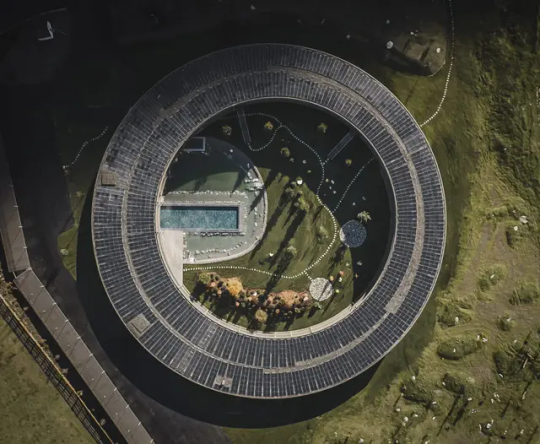














OLM Nature Escape - Eco Aparthotel,
A Design Boutique Hotel Sand in Taufers, Italy
Andreas Gruber Architekten AGA
#art#design#architecture#travels#boutique hotel#interior design#luxury lifestyle#luxury hotel#interiors#luxury hotels#escape#nature#eco friendly#spa#welness#italy#aparthotel#taufers#andreas gruber#sustainable architecture#green architecture
106 notes
·
View notes